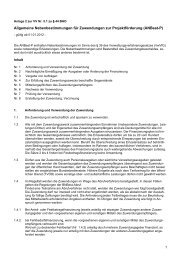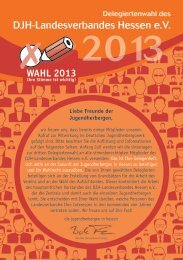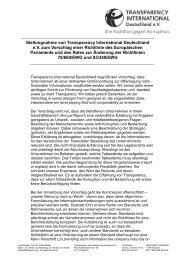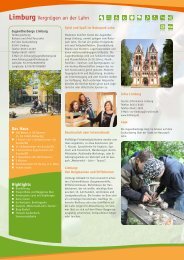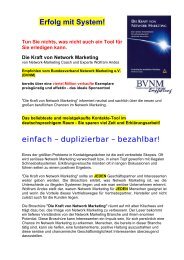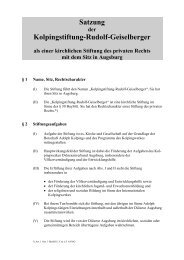REPA Booklet - Stop Epa
REPA Booklet - Stop Epa
REPA Booklet - Stop Epa
Create successful ePaper yourself
Turn your PDF publications into a flip-book with our unique Google optimized e-Paper software.
26<br />
The Joint Road Map<br />
What is a Road Map?<br />
The Pacific ACP - EC EPA Negotiations Joint Road Map sets out the agreed principles, processes and general<br />
content for the negotiations. It was released when regional negotiations between the European Commission<br />
and Pacific ACP States were formally launched in Nadi on 15 September 2004. The Islands also have their own<br />
Road Map based on their Regional Negotiating Strategy, Regional Negotiating Guidelines and Pacific Regional<br />
Action Plan.<br />
“The EU’s role in the<br />
new division of<br />
labour will be to act<br />
as the soft<br />
environmentally<br />
friendly and<br />
politically correct<br />
underbelly of the<br />
IMF/World Bank<br />
liberalisation<br />
policies.”<br />
(Grynberg 1997)<br />
Are there principles in the Joint Road Map that the Pacific Islands might use to their advantage?<br />
Cotonou is premised on a market-driven model of development. It is unrealistic to think the European Commission’s<br />
rhetoric can be twisted to achieve something different – especially when Pacific Island governments don’t have<br />
a clear alternative development model. Bearing that in mind, the main principles the governments might seek to<br />
rely on are:<br />
- the overall objectives shall be the sustainable development of the Islands, their smooth and gradual<br />
integration into the global economy and contributing to poverty eradication among their people;<br />
- the aims and objectives of economic and trade cooperation between the Pacific ACP States and the<br />
European Commission include enabling the Pacific Islands to play a full part in international trade, to<br />
manage the challenges of globalisation, and to adapt progressively to new conditions on international<br />
trade in a manner and at a pace that is conducive to their overall economic and social development;<br />
- the Economic Partnership Agreement must be an instrument for development and the development<br />
dimension must be reflected in all areas of negotiations;<br />
- the Economic Partnership Agreement will take into account the specific and special economic, social,<br />
environmental and structural constraints of the Pacific ACP States, as well as their capacity to adapt their<br />
economies to the regional economic integration process;<br />
- the negotiations will be designed to complement and support regional integration processes and<br />
programmes;<br />
- the pace of liberalisation of trade will reflect the degree of regional economic integration and be realised<br />
in a flexible and asymmetrical manner;<br />
- the Economic Partnership Agreement will preserve and improve the existing preferential access into<br />
the European market, and all Pacific ACP States participating in the Economic Partnership Agreement<br />
should be better off following the negotiations;<br />
- under the Economic Partnership Agreement, special and differential treatment should be provided to all<br />
Pacific ACP States. This should take into account the particular constraints of Least Developed<br />
Countries and the Smaller Islands States and their need for special treatment to enable them to overcome<br />
the serious economic and social difficulties that hinder their development;<br />
- the way in which special and differential treatment is incorporated in an Economic Partnership Agreement<br />
may go beyond existing WTO measures;<br />
- flexibility will be built into the broadly agreed framework to allow individual countries to adjust the<br />
pattern and schedules for implementation in ways that are consistent with their national circumstances,<br />
while still pursuing the objective of regional integration;<br />
- the Economic Partnership Agreement shall contribute to establishing specific provisions and measures<br />
to support Pacific ACP States in their efforts to overcome the natural and geographical difficulties and<br />
other obstacles that hamper their development.<br />
Is the Commission prepared to recognise the flow-on effects of PACER and the US Compacts?<br />
Yes, although it doesn’t name them. Rather surprisingly perhaps, the Road Map recognises the Economic<br />
Partnership Agreement ‘may have important implications’ that ‘will need to be reflected in all areas of the<br />
negotiations’ to ensure that the agreement in itself, and in the context of other trading commitments (PACER and<br />
the US Compacts), ‘constitutes a significant net contributor to the development of the Pacific ACP States’.<br />
54<br />
A People’s Guide To The Pacific’s Economic Partnership Agreement



